[最も選択された] sinus arrhythmia vs afib 126989-Difference between atrial fibrillation and sinus arrhythmia
Dr Geoffrey Rutledge answered 41 years experience Internal Medicine Arrhythmia Arrhythmia is a generic term for any abnormal heart rhythm Atrial fibrillation is a specific type of arrhythmia Atrial fibrillation is an irregular, Read More 0 0 comment 1Determine whether patient is better candidate for rate control or rhythm control Rate control preferred with Persistent A fibAtrial Fibrillation (Afib) is a type of arrhythmia, it produces an irregular or rapid heartbeat At this time the atria will quiver or fibrillate The atria is the upper two chambers of the heart that receive blood During the time of this rapid or irregular heartbeat, blood cannot be pumped out of

Atrial Fibrillation Anatomy Ecg And Stroke Animation Youtube
Difference between atrial fibrillation and sinus arrhythmia
Difference between atrial fibrillation and sinus arrhythmia-Nov 04, 16 · The main difference between Tachycardia and Atrial Fibrillation is that Tachycardia is a condition where the normal electrical impulses that control the rate of your heart's pumping action are disrupted whereas atrial fibrillation is a quivering or irregular heartbeat that can lead to blood clots, stroke, heart failure and other heartrelated complicationsNov 12, 17 · Sinus arrhythmia means there is an irregularity in the heart rhythm, originating at the sinus node In general, sinus arrhythmias can be Sinus
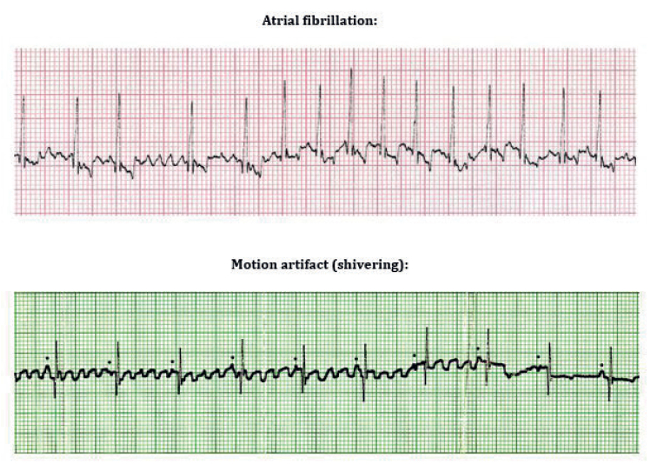



Clinical Approach To Arrhythmias Wsava 15 Congress Vin
Dec 04, · Atrial fibrillation may automatically revert to normal sinus rhythm and require no treatment, in a few people Many people with AFib can be treated with heart rate controlling or rhythmcontrolling medications (see prevention) Moreover, some people with AFib may respond well to electrical cardioversionAtrial Fibrillation Atrial fibrillation (AF) is a form of arrhythmia, or irregular heartbeat, in which the atria (the two small upper chambers of the heart) quiver instead of beating effectively It is one of the most common forms of cardiac arrhythmia, affecting 04% of the general population and 5 to 10% of persons over 65 years of ageApr 02, 06 · Your patient with atrial fibrillation (AF)is hemodynamically stable and youhave successfully established rate controlYour next step is to weigh therisks and benefits of attempting to restoresinus rhythm In up to one half ofpatients, AF of recent onset convertsspontaneously to normal sinus rhythmwithin 24 hours Thus, in some cases,the most appropriate approach maybe
Atrial Fibrillation Atrial Fibrillation with Bradycardia ECG (Example 1) Atrial Fibrillation with Bradycardia ECG (Example 2) Atrial Fibrillation with Bradycardia ECG (Example 3)Mar 22, 21 · Study Conclusion In fact, the AFFIRM investigators concluded, "the presence of sinus rhythm was one of the most powerful independent predictors of survival, along with the use of warfarinPatients in sinus rhythm were almost half as likely to die compared with those with AFib" New Study Confirms Rhythm Better Than Rate ControlJan 05, · MAT has at least 3 distinct Pwave morphologies, but there is no single dominant pacemaker (ie, no underlying sinus rhythm) Rhythm Diagnosis Sinus Rhythm with Multifocal Premature Atrial Beats (PACs or PABs), many conducting aberrantly More Learning Points Do not trust the computer algorithm to diagnose atrial fib or absence thereof
Jul 28, · Atrial fibrillation (AFib) is the most common type of heart arrhythmia It occurs when the heart beats at an irregular, often rapid pace While AFib is usually not lifethreatening, it does increase the chance of a stroke occurring because it prevents part of the heart from properly beating and effectively moving blood AFib symptoms includeAug 07, 19 · Figure 2 Atrial Fibrillation vs Normal Sinus Rhythm on Electrocardiogram During atrial fibrillation, the heart fails to beat regularly and shows an irregular rhythm on ECGs Atrial fibrillation has been estimated to cause around 15% of all strokes This is concerning as much of this is preventable with good treatmentMay , 19 · Background Atrial fibrillation (AF) is a common cardiac dysrhythmia encountered in the emergency department (ED), affecting 27 million – 61 million Americans annuallyHospitalizations with AF as the primary diagnosis total >467,000 annually AF is associated with a 5fold increased risk of ischemic stroke, a 3fold increase in risk of heart failure, and a 2




Clinical Approach To Arrhythmias Wsava 15 Congress Vin




Overview Of Cardiac Arrhythmias Amboss
Jun 15, 02 · Atrial fibrillation is the most common cardiac arrhythmia family physicians are likely to encounter This rhythm abnormality affects 3 to 5Sinus Arrhythmia Sinus arrhythmia is an irregular rhythm originating in the sinus node characterized by variable PP intervals All P waves are identical or nearly identical In most children there is normal variability in PP intervals associated with the respiratory cycle (the rate increases with inspiration and decreases with expiration)Sep 18, · Atrial flutter, atrial fibrillation (AFib), and atrial tachycardia are not the same things However, all three terms have in common a rapid heart rate that can be felt when a person feels their pulse Atrial tachycardia is a general term that indicates a cardiac condition where the rate of contraction of the heart's atria is fast and not normal, but does not describe the type of heart rhythm




Apple Watch Vs Kardia To Monitor Afib From Home A Case Study Medpage Today




Apple Watch Versus Kardia To Monitor Atrial Fibrillation From Home A Case Study The Skeptical Cardiologist
How Atrial Fibrillation Progresses While atrial fibrillation may start out somewhat benign, over time it may progress and become much more serious During early episodes, atrial fibrillation may go away by itself within a few minutes, though over time, it may require medicine to go away Some of the afib patients that we have spoken with saidIt is considered to be a normal variation of sinus rhythm Upon confirming the diagnosis, there are no further recommendations regarding treatment 2 Differential diagnosis for sinus arrhythmia would include premature sinus or atrial complexes, sick sinus syndrome (sinoatrial block or sinus pauses), atrial fibrillation, or complete AV block 1 2 3The American Heart Association explains that arrhythmia refers to any change from the normal sequence of electrical impulses, such as atrial fibrillation, bradycardia, tachycardia, conduction disorders, rhythm disorders, ventricular fibrillation, premature contractions and




03 05 Atrial Fibrillation A Fib Nrsng Nursing Courses
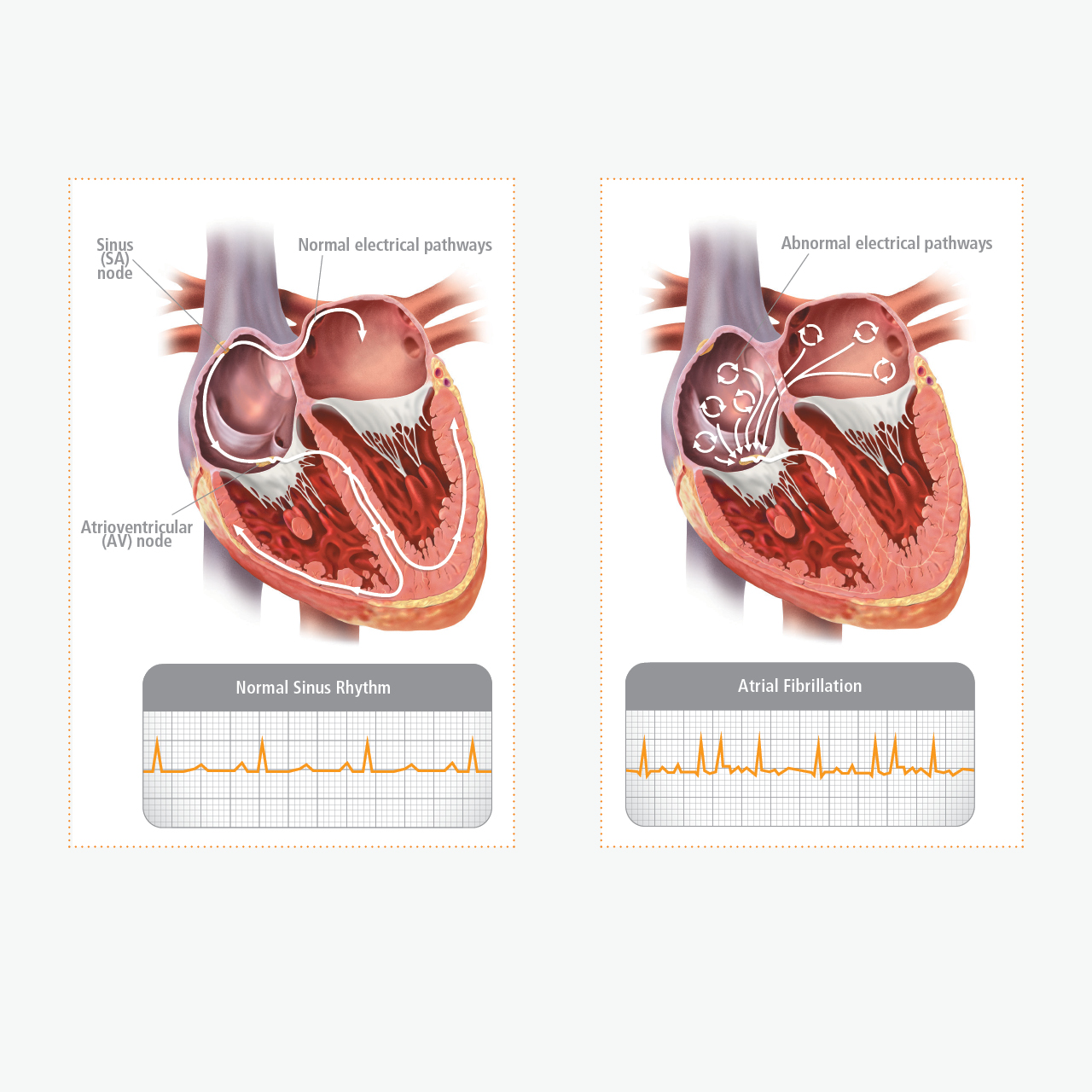



How Is Atrial Fibrillation Characterized
May 01, 17 · Atrial flutter and atrial fibrillation (AFib) are both types of arrhythmias They both occur when there are problems with the electrical signals that make your heart chambers contract"Diagnosed with atrial fibrillation in 07 Three electrocardioversions, two ablations, a Medtronic ICD and 1000 mcg a day of Tikosyn and I am in sinus rhythm % of the time Before treatment I was in AFib for 10 monthsNov 03, 16 · Both atrial fibrillation and sick sinus syndrome (a subset of which is also known as "tachybrady" syndrome) are more common in elderly patients The problem comes when they coexist and as a result, make management of each disease more challenging Let's illustrate with a case Case Mrs




Atrial Flutter Vs Atrial Fibrillation Afib Ecg 11 Symptoms Differences




Understanding The Ekg Signal Atrial Fibrillation Resources For Patients
Nov 27, 14 · Sinus arrhythmia is most commonly seen when the heart rate is slow And when the heart rate speeds up, during exercise for example, the rhythm tends to become regular In general, the presence of sinus arrhythmia is not indicative of the need for further testing and people can be reassured as to its generally benign natureMar 23, 10 · Atrial fibrillation (AF) is the most prevalent cardiac arrhythmia yet the ideal treatment strategy is hotly debated Large randomized trials have failed to demonstrate a mortality benefit of a pharmacologically based rhythm control strategy compared with a ratecontrolled strategy, even in patients with left ventricular dysfunction 1–4 This has led to a widespread3 Risk Factors The risk factors for each atrial fibrillation and supraventricular tachycardia are also quite different With afib the risk factors are age and genetics, while with svt the use of illegal drugs, underlying health issues, or heart failure is to blame This means that svt is preventable while afib



1
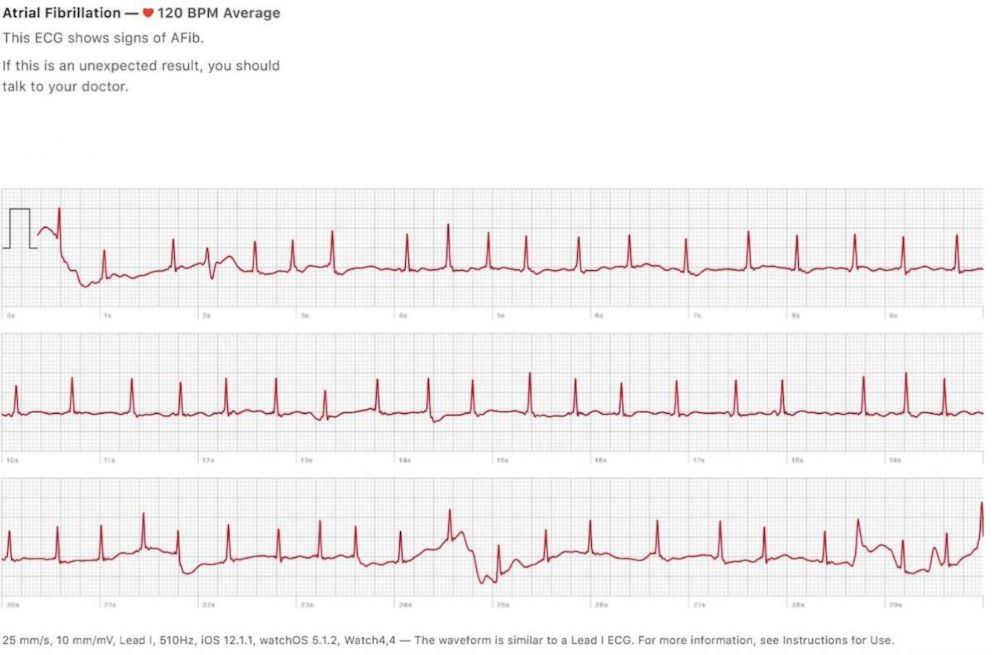



An Apple Watch Told A 46 Year Old Man He Had An Irregular Heartbeat It Was Right Abc News
Jun 14, 17 · Sinus arrhythmia refers to a changing sinus node rate with the respiratory cycle, on inspiration and expiration This is quite common in young, healthy individuals andAtrial fibrillation (AF) is a common arrhythmia disease that can cause thromboembolic disease and/or heart failure, resulting in increased mortality Propafenone, amiodarone, and flecainide are recommended for converting AF to sinus rhythm Beta blockers, verapamil, diltiazem, and digoxin are recommended for controlling AF with fast ventricularJun 04, 21 · Sinus arrhythmia is a normal physiological phenomenon, most commnonly seen in young, healthy people The heart rate varies due to reflex changes in vagal tone during the different stages of the respiratory cycle Inspiration increases the heart rate by decreasing vagal tone With the onset of expiration, vagal tone is restored, leading to a
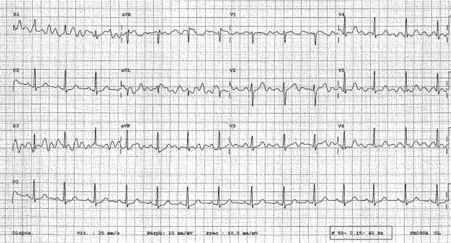



Afib Detection True Or False Due To Bad Quality Recordings
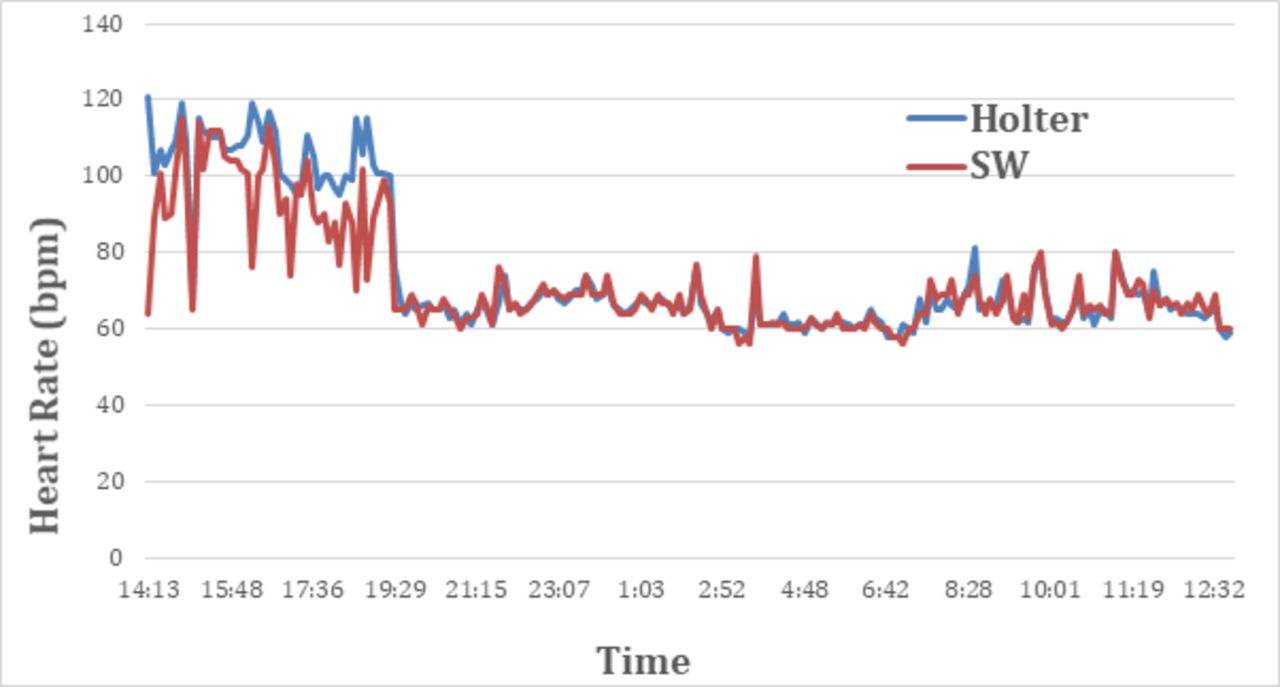



Spontaneous Reversion Of Paroxysmal Atrial Fibrillation Detected By Smart Watch Bmj Case Reports
Background Symptomatic prolonged sinus pauses on termination of atrial fibrillation (AF) are an accepted indication for pacemaker implantation We evaluated the outcome of AF ablation in patients with paroxysmal AFrelated tachycardiabradycardia syndrome and compared the efficacy of catheter ablation with permanent pacing plus antiarrhythmic drugs (AADs)Jun 01, 02 · The Atrial Fibrillation FollowUp Investigation of Rhythm Management Study randomized patients with paroxysmal or chronic AF of less than 6 months of duration at high risk for stroke to either maintenance of AF with ventricular rate control or to an attempt to maintain sinus rhythm with antiarrhythmic drugs after cardioversion Patients in25% RRR in 1st AFib recurrence (P




Automated Detection Of Atrial Fibrillation And Atrial Flutter In Ecg Signals Based On Convolutional And Improved Elman Neural Network Sciencedirect
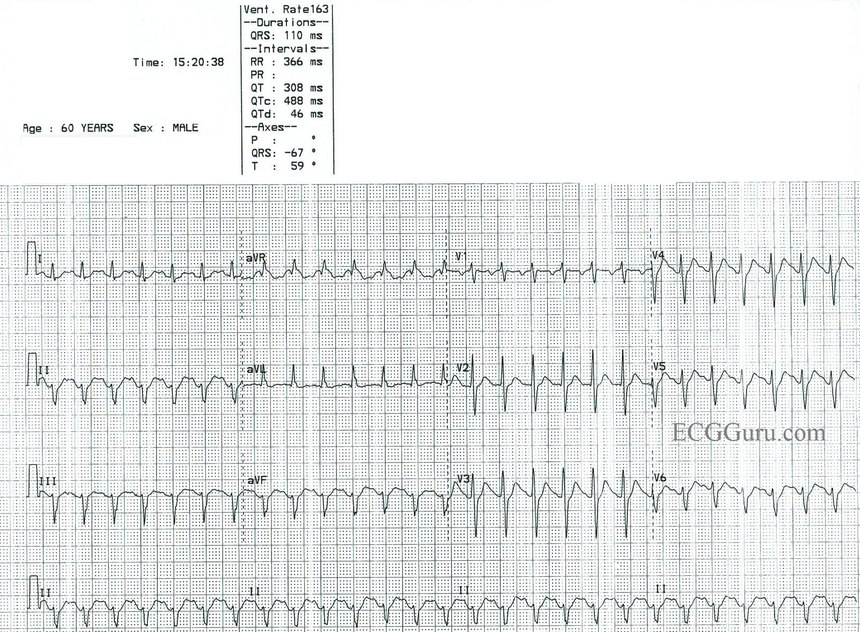



Sinus Tach Or Svt 4 Clues To Tell The Difference
Atrial fibrillation vs normal sinus rhythm A 52yearold member asked how many times can you perform cardioversion to revert atrial fibrillation to normal sinus rhythm?The prespecified covariates were age (as a continuous variable), sex, rhythm at randomization (sinus rhythm vs atrial fibrillation), a first episode of atrial fibrillation (vs a recurrentYour heart's job is to pump blood throughout your body When it's working the way it should, it pumps to a regular, steady beat This is called a normal sinus rhythm



1
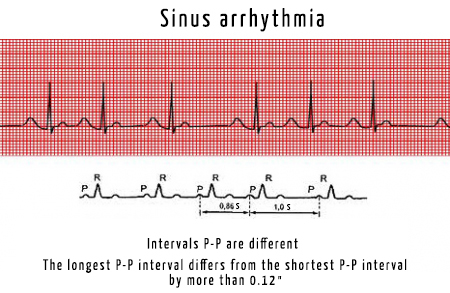



Sinus Arrhythmia Cardiowiki
Keywords atrial fibrillation, sinus rhythm, zinc 1 Introduction Atrial fibrillation (AF) is the most common arrhythmia and its incidence increases significantly with age In the population aged between 5560 years it is 05% to almost 18% in those over 85Atrial fibrillation is a fast, irregular rhythm where single muscle fibers in your heart twitch or contract It is a main cause of stroke, especially among elderly people Atrial fibrillation may cause blood to pool in the heart's upper chambers The pooled blood can lead to the formation of clumps of blood called blood clotsDr Louis Grenzer answered 55 years experience Cardiology




Atrial Fibrillation Afib Ekg Ecg Interpretation Youtube




Atrial Tachycardia Diagnosis And Treatment The Cardiology Advisor
Sep 19, 17 · AFib vs VFib If your doctor told you that you had an abnormal heart rhythm, it could be overwhelming There are a variety of different types of AFib that you could have, after all – keeping them straight can be confusing Atrial fibrillation (AFib) and ventricular fibrillation (VFib) may sound alike, but they are a lot differentA fib / A Flutter with variable conduction (see also Atrial Fibrillation with RVR) Check if patient has taken usual ratecontrol meds If missed dose, may provide dose of home medication and observe for resolution;What is an arrhythmia?




Supraventricular Arrhythmias Clinical Framework And Common Scenarios For The Internist Mayo Clinic Proceedings




Understanding The Ekg Signal Atrial Fibrillation Resources For Patients
Oct 31, 17 · Difference in arrhythmia from atrial fibrillation Inertial arrhythmia refers to a group of cardiac arrhythmias Its main manifestations can be considered as alternation of fading of the heart and rapid heartbeat Also, flashing patients often notice sensations in the form of "the heart trembles like an autumn leaf" and "the heart beats like aRationale Atrial fibrillation (AF) is a common arrhythmia disease that can cause thromboembolic disease and/or heart failure, resulting in increased mortality Propafenone, amiodarone, and flecainide are recommended for converting AF to sinus rhythm Beta blockers, verapamil, diltiazem, and digoxin are recommended for controlling AF with fast ventricular rate (VR)Aug , 18 · A quivery heartbeat or flutter in your chest two telltale signs you could be in atrial fibrillation, or AFibThat means your heart is beating out




Putting Apple Watch 4 To The Test In Afib Medpage Today
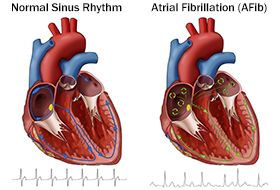



Normal Sinus Rhythm Vs Atrial Fibrillation Irregularities
May 13, · Comparative efficacy of dronedarone and amiodarone for the maintenance of sinus rhythm in patients with atrial fibrillation J Am Coll Cardiol




Dr Smith S Ecg Blog Atrial Fibrillation Multifocal Atrial Tachycardia Don T Look At Computer Read Until After You Interpret
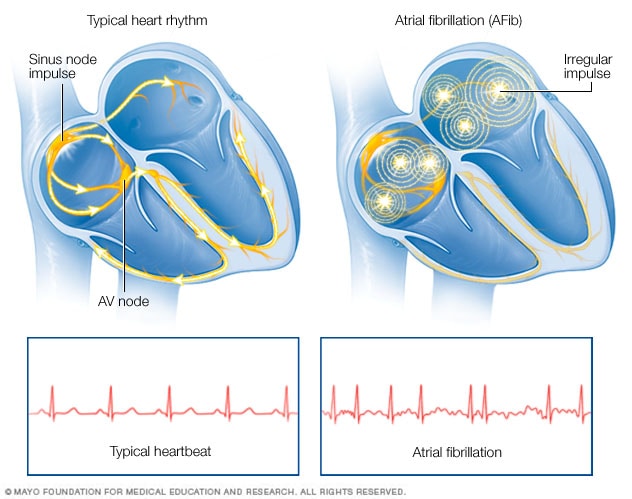



Normal Heart Rhythm Versus Atrial Fibrillation Mayo Clinic




Atrial Fibrillation And Atrial Flutter Heart And Blood Vessel Disorders Merck Manuals Consumer Version




Ecg Of The 4 Classes Atrial Fibrillation As One Example Of Class 0 Download Scientific Diagram




From Atrial Fibrillation To Ventricular Fibrillation And Back Circulation




Dr Smith S Ecg Blog Beware Automated Interpretations Of Atrial Fibrillation




Atrial Tachycardia Diagnosis And Treatment The Cardiology Advisor



Atrial Fibrillation Review And Update With James Furgerson Md The Curbsiders
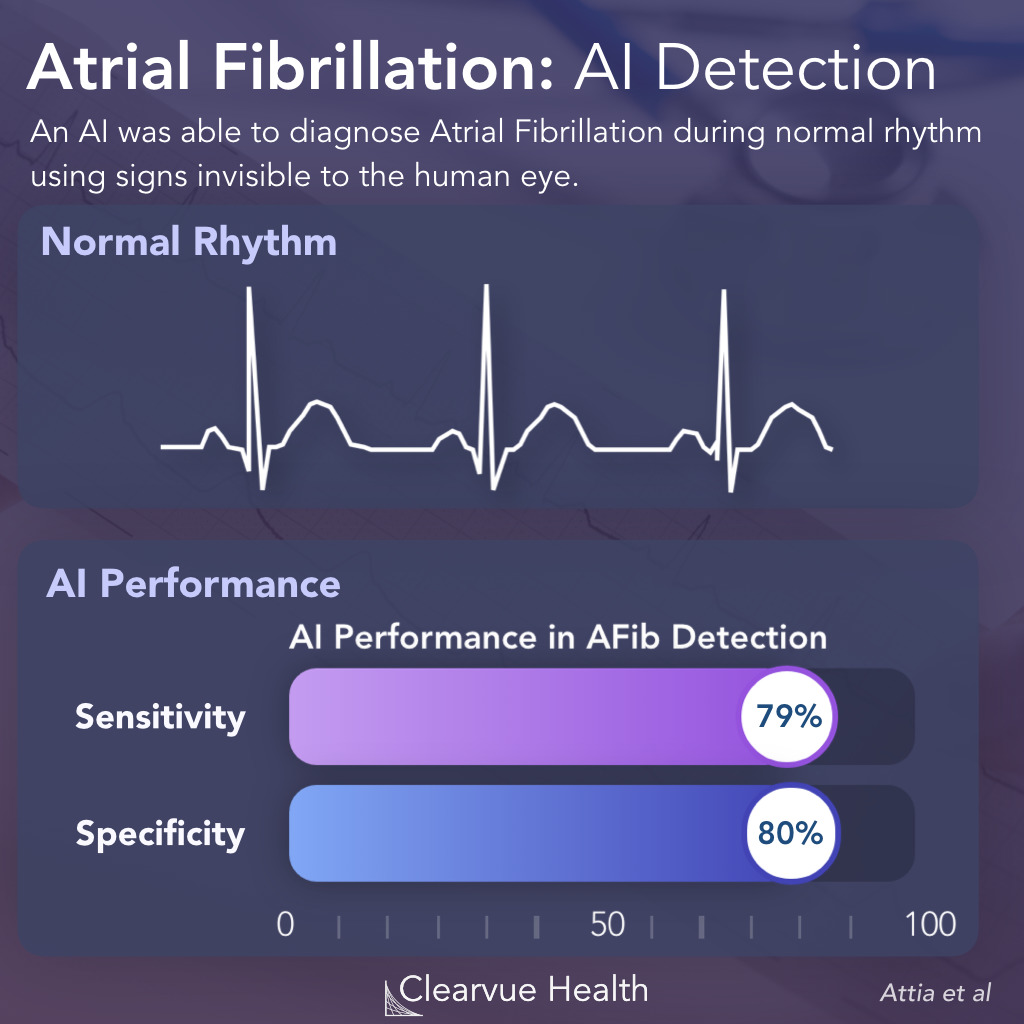



4 Charts Ai Diagnoses Atrial Fibrillation In Normal Sinus Rhythm Visualized Science




Prognostic Significance Of Present Atrial Fibrillation On A Single Office Electrocardiogram In Patients With Atrial Fibrillation Krisai 21 Journal Of Internal Medicine Wiley Online Library




Novel Ecg Parameters During Atrial Fibrillation Predict The Conversion To Sinus Rhythm By Infusion Of Pilsicainide Heart Rhythm




Overview Of Cardiac Arrhythmias Amboss




Atrial Fibrillation Nature Reviews Disease Primers




Intro To Ekg Interpretation Overview Of Tachyarrhythmias Youtube
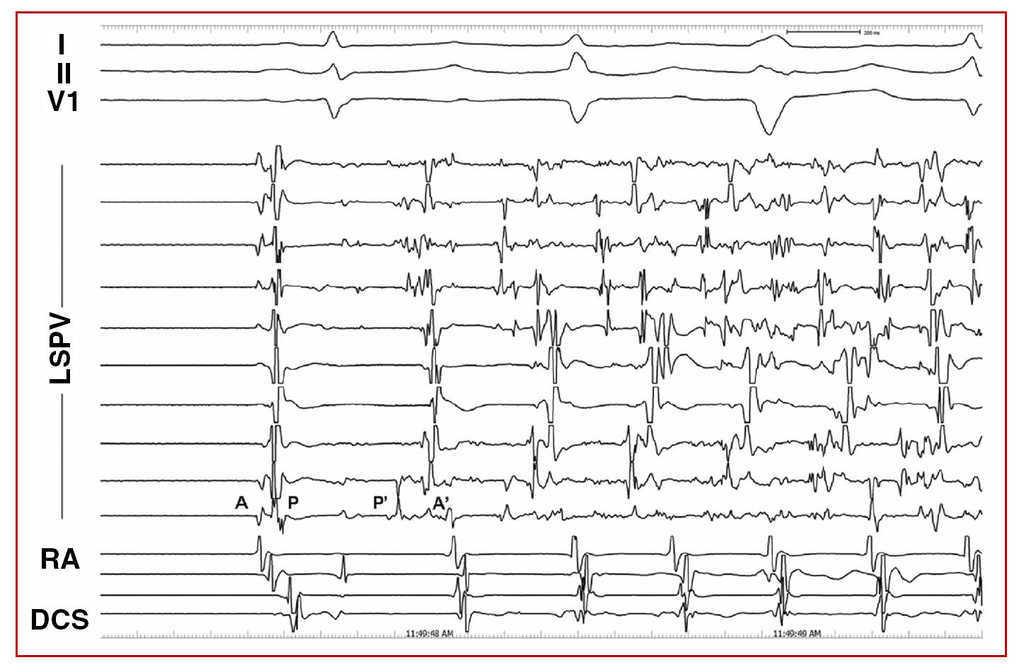



Inducibility Of Atrial Arrhythmias After Adenosine And Isoproterenol Infusion In Patients Referred For Atrial Fibrillation Ablation Revista Espanola De Cardiologia




Atrial Fibrillation Anatomy Ecg And Stroke Animation Youtube




An Artificial Intelligence Enabled Ecg Algorithm For The Identification Of Patients With Atrial Fibrillation During Sinus Rhythm A Retrospective Analysis Of Outcome Prediction The Lancet




Atrial Fibrillation Wikipedia




Premature Atrial Contraction An Overview Sciencedirect Topics



1




Arrhythmias For 6 C Docx Arrhythmias For 6 C Docx
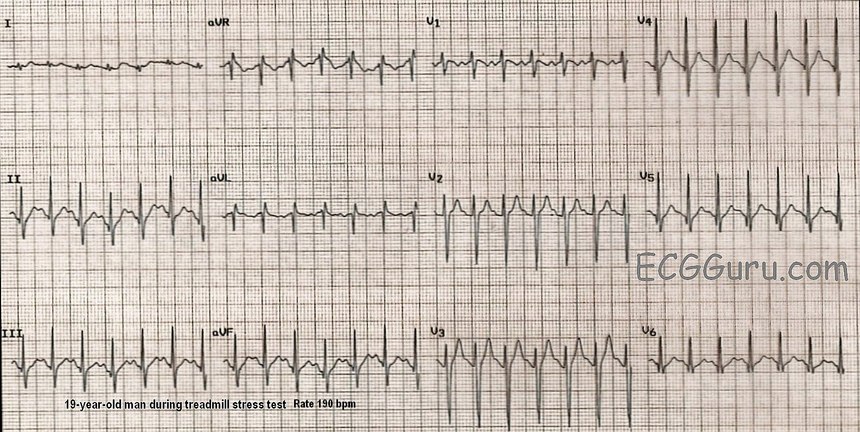



Sinus Tach Or Svt 4 Clues To Tell The Difference




Examples Of Normal Sinus Rhythm Nsr And Atrial Fibrillation Af Download Scientific Diagram




Atrial Fibrillation Rythms Categorised As Supra Ventricular Tachycardia Svt Supra Ventricular Tachycardia Cardiology Teaching Package Practice Learning Division Of Nursing The University Of Nottingham
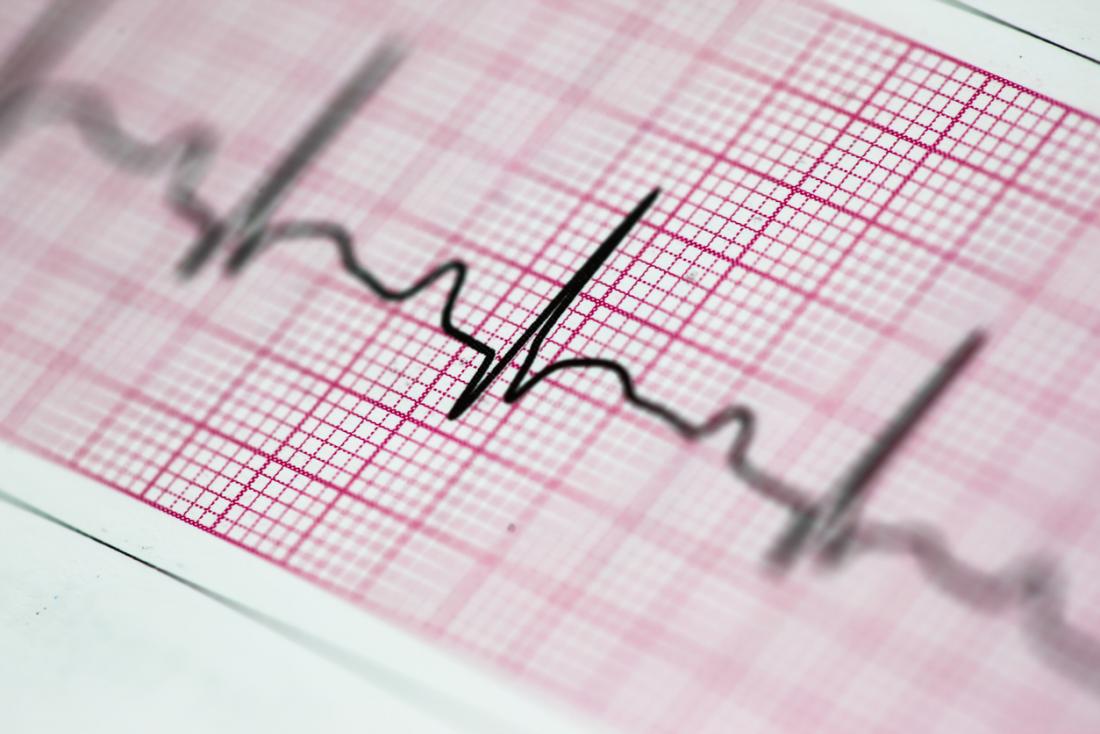



Sinus Arrhythmia Definition Signs And Diagnosis




Atrial Fibrillation Wikipedia




6 Atrial Flutter Treatment Symptoms Ecg Serious Vs Afib




Arrhythmias




14 What Is The Rhythm For The Below Strip A Chegg Com




Atrial Fibrillation Nejm
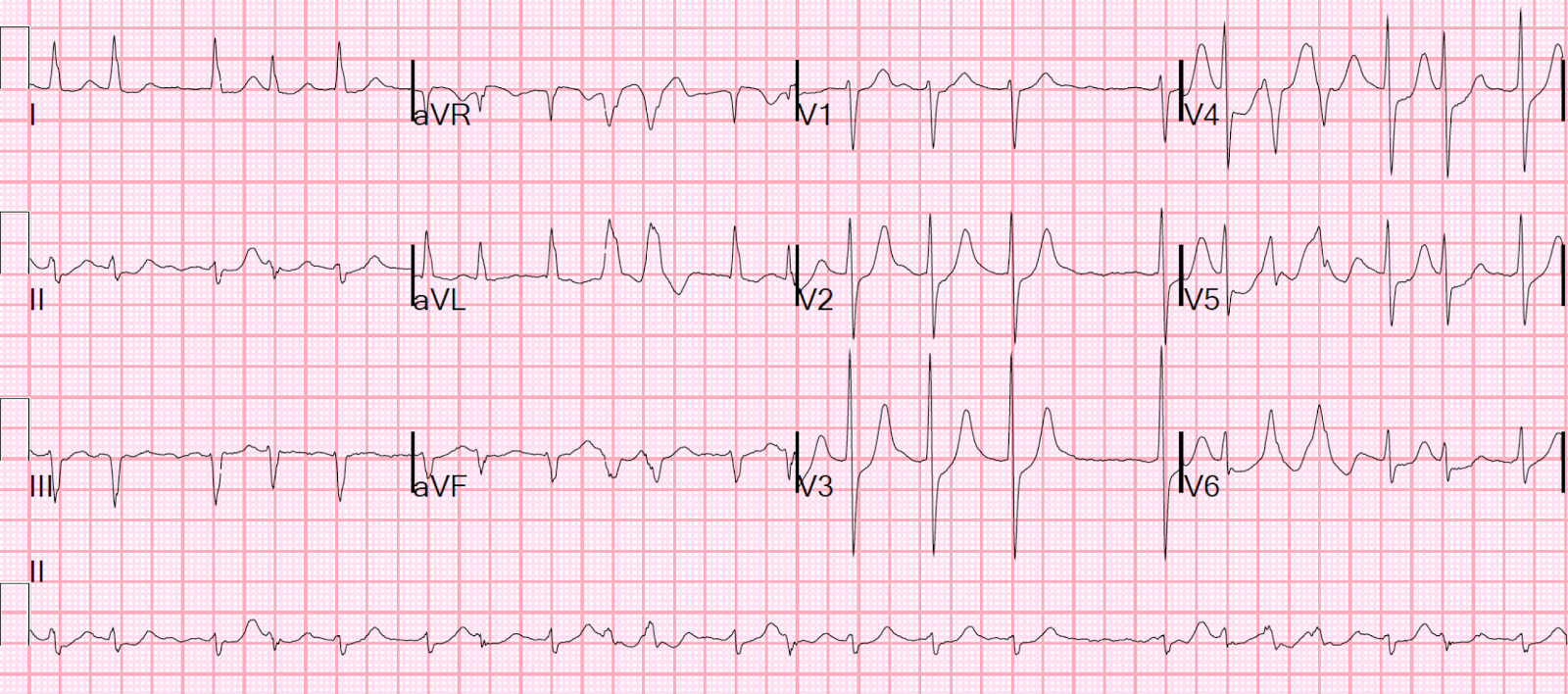



Dr Smith S Ecg Blog Atrial Fibrillation With Rvr Use Pocus To Assess Volume Then Sinus Vs Svt Use Of Lewis Leads



1
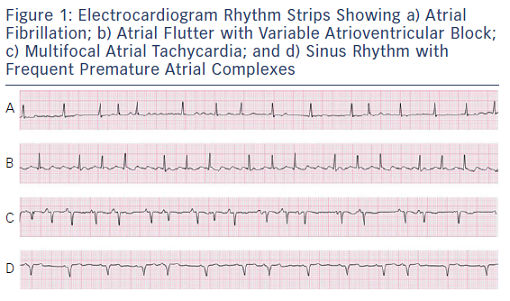



Figure 1 Electrocardiogram Rhythm Strips Showing A Atrial Fibrillation B Atrial Flutter With Variable Atrioventricular Block C Multifocal Atrial Tachycardia And D Sinus Rhythm With Frequent Premature Atrial Complexes Usc Journal



Step By Step Approach To Afib With Rvr Kwak Talk




Supraventricular Arrhythmias Clinical Framework And Common Scenarios For The Internist Mayo Clinic Proceedings




Smartwatch Performance For The Detection And Quantification Of Atrial Fibrillation Circulation Arrhythmia And Electrophysiology




A Sinus Bradycardia B Normal Sinus Rhythm C Sinus Chegg Com




Atrial Fibrillation Vs Normal Sinus Rhythm The Figure Illustrates The Download Scientific Diagram




Atrial Arrhythmias Nsr Atrial Flutter Atrial Fibrillation Youtube




Targeting Underlying Conditions May Improve Sinus Rhythm In Atrial Fibrillation The Cardiology Advisor




Sinus Arrhythmia Normal Function Of The Heart Cardiology Teaching Package Practice Learning Division Of Nursing The University Of Nottingham




Atrial Fibrillation Topic Review Learntheheart Com




Sinus Arrhythmia Litfl Medical Blog Ecg Library Basics




Atrial Fibrillation Detection From Raw Photoplethysmography Waveforms A Deep Learning Application Heart Rhythm O2



What Is Atrial Fibrillation Afib Or Af
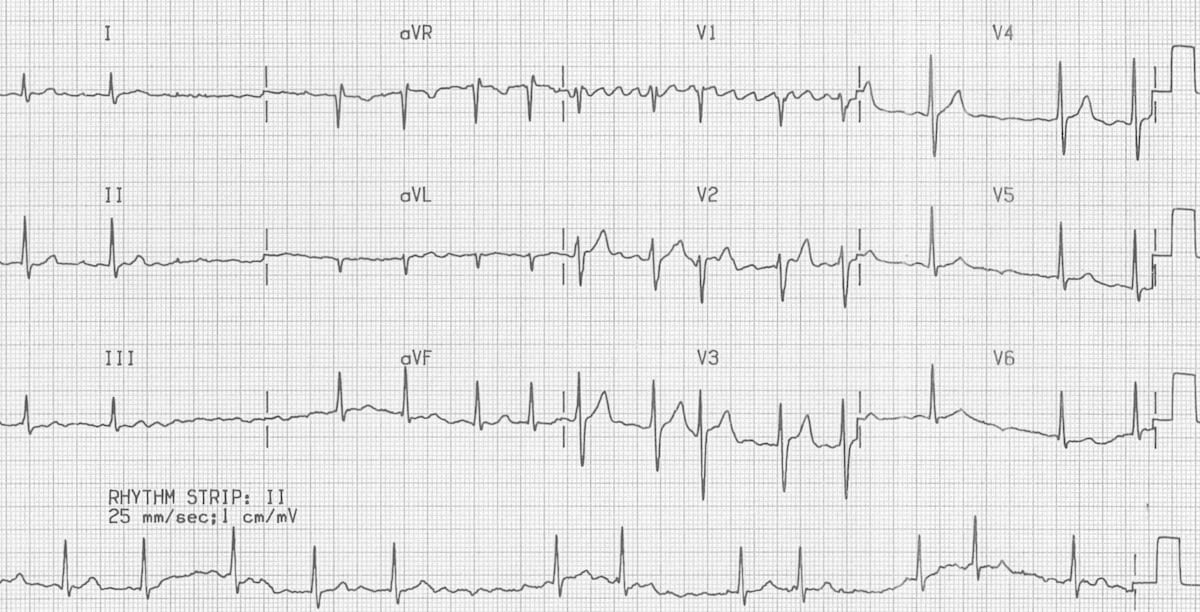



Atrial Fibrillation Litfl Ecg Library Diagnosis




Sinus Arrhythmia Wikipedia



Common Arrhythmias In Dogs And Cats




Pin On Public Health Medicine Nursing Dentistry Case Management Research International Medicine
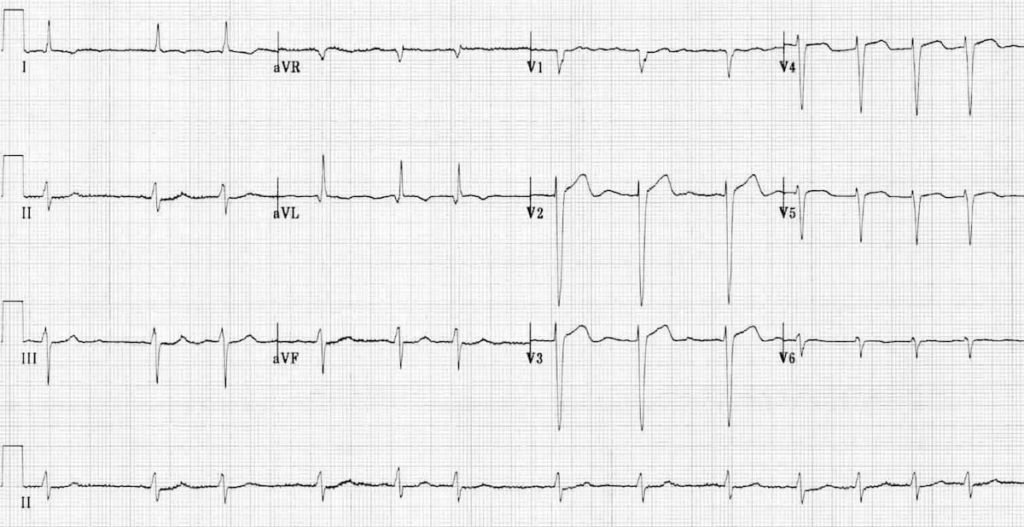



Atrial Fibrillation Litfl Ecg Library Diagnosis




Atrial Fibrillation Rachel Kitchen Overview Definition And Epidemiology




Detection Of Atrial Fibrillation Using Contactless Facial Video Monitoring Heart Rhythm
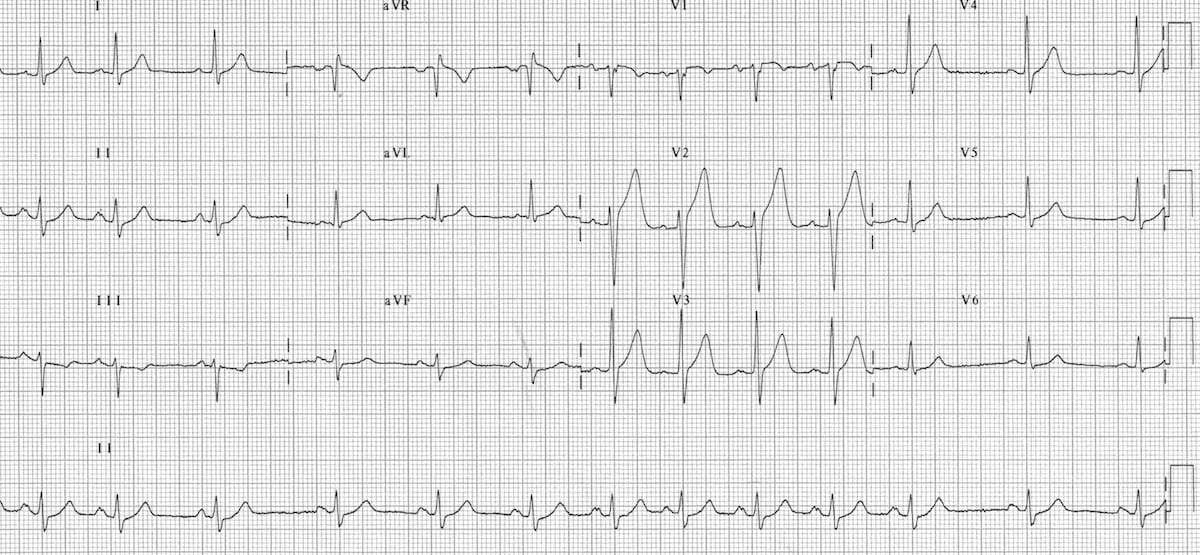



Sinus Arrhythmia Litfl Medical Blog Ecg Library Basics




Examples Of Normal Sinus Rhythm Nsr And Atrial Fibrillation Af Download Scientific Diagram




Overview Of Cardiac Arrhythmias Amboss
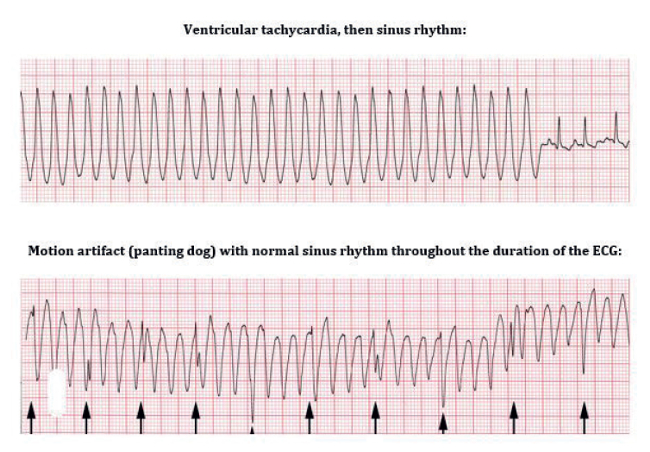



Clinical Approach To Arrhythmias Wsava 15 Congress Vin




Left Atrial Strain As A Predictor Of New Onset Atrial Fibrillation In Patients With Heart Failure Sciencedirect




Why I Favor The Early Restoration And Maintenance Of Sinus Rhythm In Most Patients With Atrial Fibrillation The Skeptical Cardiologist
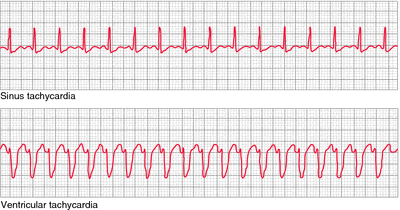



Sinus Tachycardia Definition Of Sinus Tachycardia By Medical Dictionary




Electrocardiogram For Sinus Rhythm Top And Atrial Fibrillation Download Scientific Diagram




Pdf Characterizing Left Atrial Appendage Functions In Sinus Rhythm And Atrial Fibrillation Using Computational Models




Pin On Ekg




Top 5 Arrhythmias In Dogs Cats Clinician S Brief




Atrial Fibrillation Litfl Ecg Library Diagnosis




Sinus Arrhythmia What Is It




Dr Smith S Ecg Blog Beware Automated Interpretations Of Atrial Fibrillation




Atrial Fibrillation Wikipedia




Ekg Ecg Svt Vs Atrial Fibrillation The Ekg Guy Www Ekg Md Youtube




Sinus Node And Atrial Arrhythmias Circulation




Isolated Left Atrial Standstill In Patients With Hypertrophic Cardiomyopathy And Atrial Fibrillation After Restoration Of Sinus Rhythm Journal Of The American Society Of Echocardiography
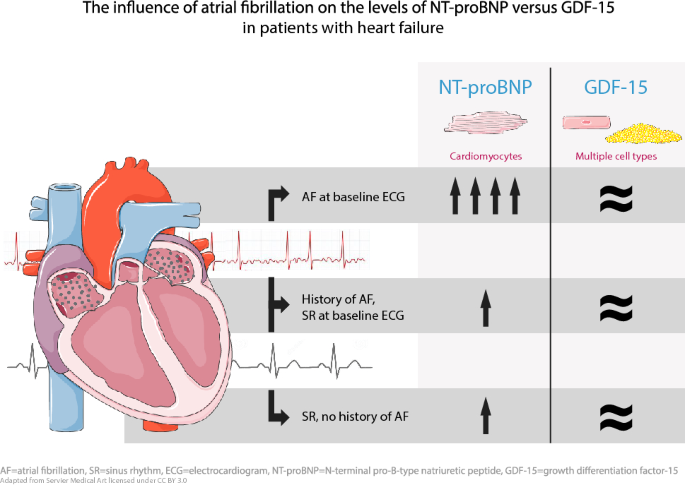



The Influence Of Atrial Fibrillation On The Levels Of Nt Probnp Versus Gdf 15 In Patients With Heart Failure Springerlink




Atrial Fibrillation Ecg Classification Causes Risk Factors Management Ecg Echo




Ecg Sinus Arrhythmia Youtube




Atrial Fibrillation



Afib Detection True Or False Due To Bad Quality Recordings




Atrial Fibrillation Nature Reviews Disease Primers




A Example Of Normal Sinus Rhythm B Example Of Atrial Fibrillation Download Scientific Diagram
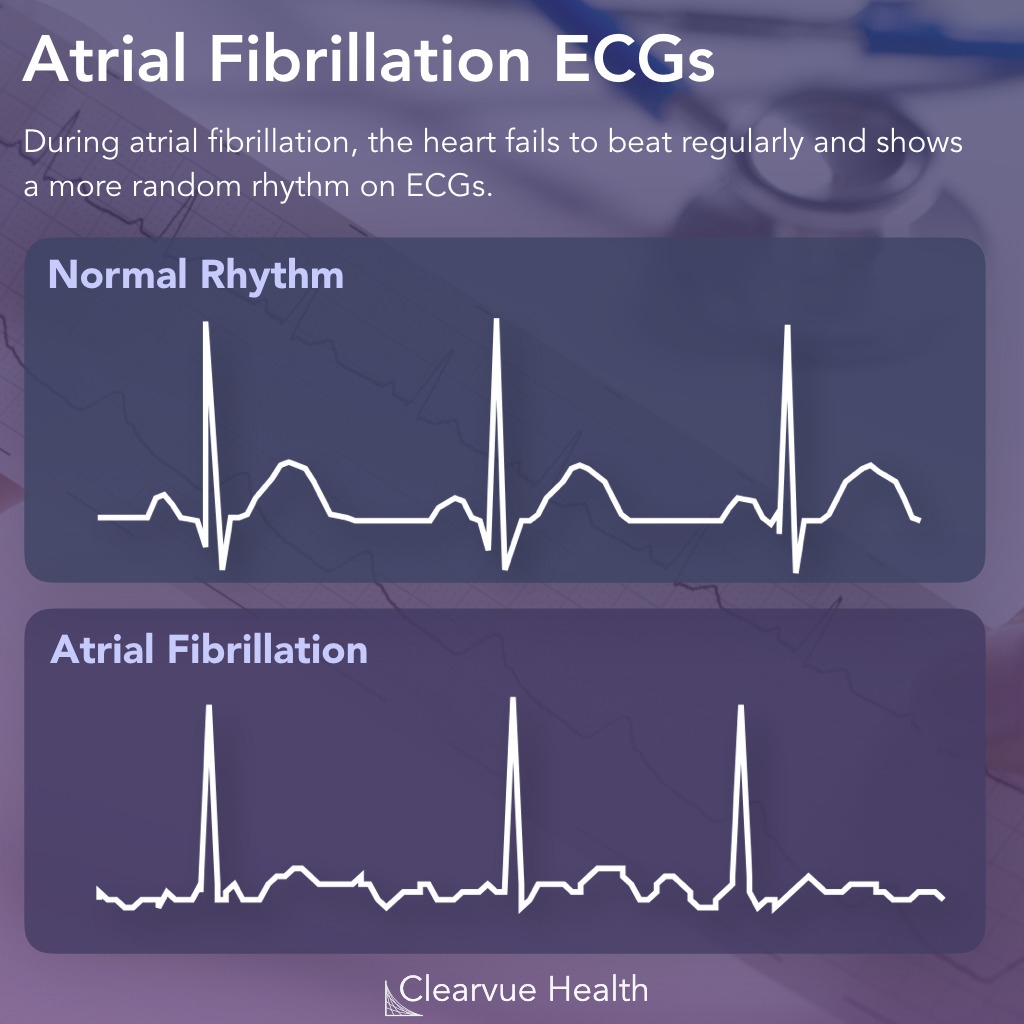



4 Charts Ai Diagnoses Atrial Fibrillation In Normal Sinus Rhythm Visualized Science
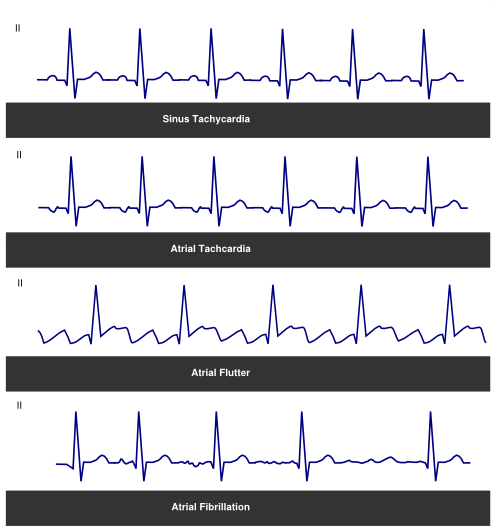



Tachycardia Textbook Of Cardiology
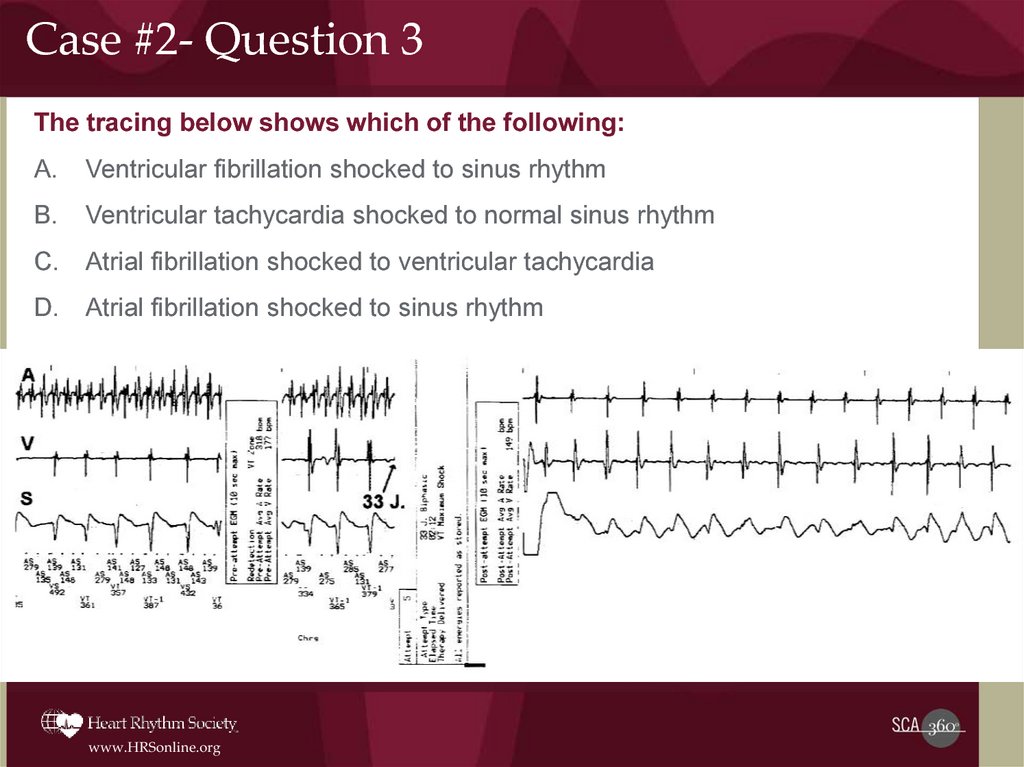



Arrhythmia Case Studies Prezentaciya Onlajn
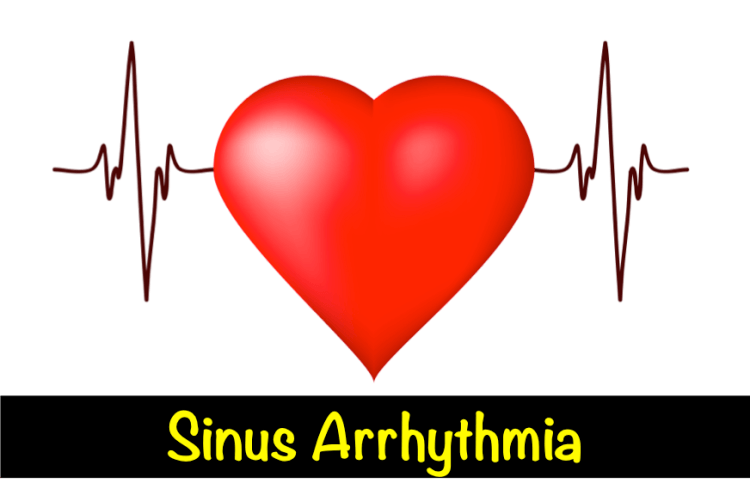



Sinus Arrhythmia What Is It
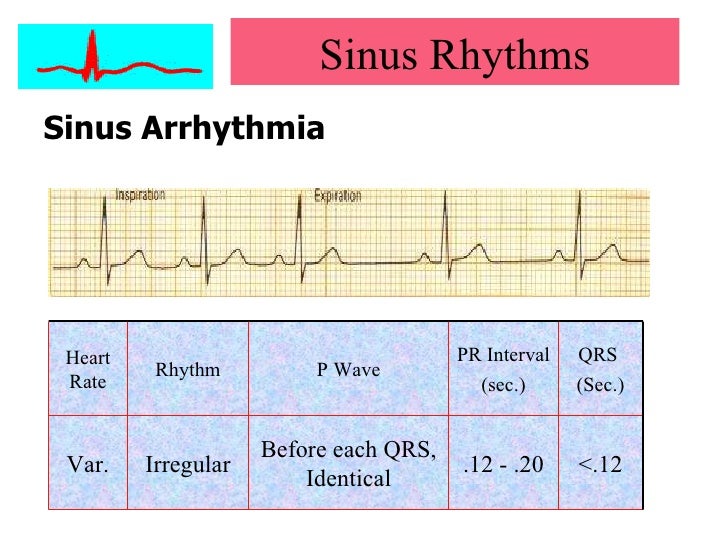



Cardiac Arrhythmias


コメント
コメントを投稿